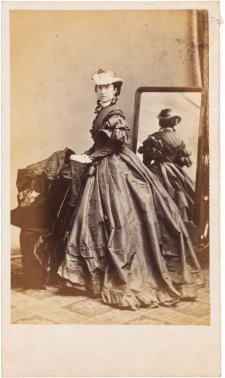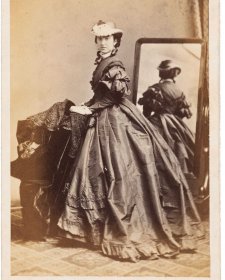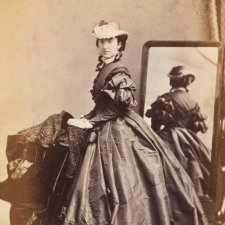- About us
- Support the Gallery
- Venue hire
- Publications
- Research library
- Organisation chart
- Employment
- Contact us
- Make a booking
- Onsite programs
- Online programs
- School visit information
- Learning resources
- Little Darlings
- Professional learning
Clara Crosbie gained widespread sympathy and short-lived fame after enduring twenty-one days in the bush near Yellingbo in Victoria in mid-1885. Clara had gone astray while trying to make her way home from a visit to a neighbour and had taken refuge for three weeks in a hollow tree before being found. Suffering exposure and starvation from her ordeal, it was reported that ‘she had not tasted the least thing during the whole three weeks (except once having chewed a bit of bark)’. Following her rescue by two men – a pianoforte tuner, Mr. Smith, and a farmer, Mr. Cowan, who found the ‘little creature’ in a state ‘so weak she could scarcely stand’ – she was admitted to Melbourne Hospital suffering lacerations, swollen feet and chafed knees (due to her cramped position while sheltering in the tree). Her inclination to sleep and rest rather than wandering exhaustedly about accounted for her comparatively good condition. Upon being discharged, she was despatched to the Protestant Orphanage in Brighton where she remained for some time while authorities decided what to do with her. (There were suggestions in the press at the time that Clara’s mother was an unfit parent). Bizarrely, they determined that a desirable solution was to ‘offer’ the girl to Maximilian Kreitmayer, a Melbourne waxworks proprietor. Clara’s mother was favourable to the proposal and decided that Kreitmayer would ‘clothe, educate and bring [Clara] up properly.’ A further agreement was made whereby Kreitmayer paid Clara’s father a handsome three pounds a week for the privilege of exhibiting her. Twice each day Clara would perform a scripted account of her frightening story and of how she ‘lived in the Bush for 21 days WITHOUT FOOD.’ On 11 January 1886, the Sydney Morning Herald reported that around 150,000 people had visited the show.
In this carte de visite – an advertisement for and a souvenir of her appearances at the waxworks – Clara feigns one of the times during her ordeal when ‘she prayed to God to preserve her life.’ Some scholars have suggested, however, that the girl in this photo is not the real Clara but a stand-in.
Collection: National Portrait Gallery
Gift of John McPhee 2018
John McPhee (4 portraits)



On one level The Companion talks about the most famous and frontline Australians, but on another it tells us about ourselves.



Drawn from the NPG’s burgeoning collection of cartes de visite, Carte-o-mania! celebrates the wit, style and substance of the pocket-sized portraits that were taken and collected like crazy in post-goldrush Australia.



Visit us, learn with us, support us or work with us! Here’s a range of information about planning your visit, our history and more!